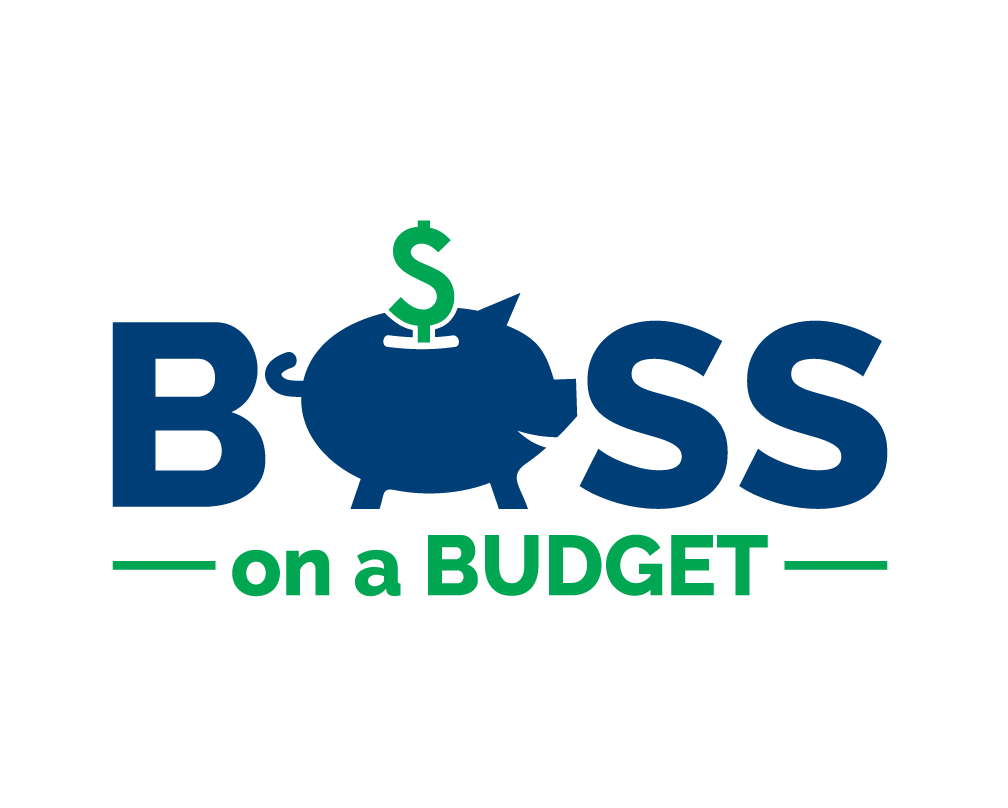11 Powerful Nonprofit Mission Statements and a Simple Formula to Write Your Own
What’s your mission?
If your dream is to start a nonprofit (or you already have one), prepare to hear that question for the rest of your organization’s existence. It’s by far the most common question you’ll get. If not that question, you will get some variation of it like, what do you do? Who do you help?
No wonder experts recommend that you focus on getting your mission statement right from the very beginning. But instead of spending the right time to craft a powerful and impactful mission, we go through the motions and just create a mission for the sake of creating one (or just for the paperwork).
You know when someone tells you to do something and you do it just because they told you to? Like when experts recommend a savings account equal to 3-6 months of your household expenses? You know that they say you should do it, but you don’t quite understand why it’s so important until *stuff* hits the fan and you really need it.
Sometimes I feel the same way with new nonprofits. You craft your mission statement because you know it’s the right thing to do, but don’t quite get how important it is to your organization’s success.
If more of us paid attention to this, we would avoid a lot of the mishaps that occur when we’re not clear on our purpose and we’re trying to navigate the startup years. A mission is one critical element of nonprofit startup. Check out my nonprofit startup workbook below to have a roadmap for starting your nonprofit.
So in this blog post, I want to share 11 great mission statement examples for inspiration, and a simple formula to create your own mission statement.
But first, let’s talk about how your mission can be an effective tool.
It brings you focus
Your mission guides all of your nonprofit’s decisions. As a new nonprofit, you’ll be tempted by many great ideas or well-meaning supporters who feel like you should be doing x or y. Sometimes it makes sense given what you decided what your mission is, but sometimes those new ideas are not a good fit. Your mission will serve as a good measuring stick to determine to expand or stay put. Any time you’re presented with a new idea or opportunity, the first question should be, does it align with our mission?
It’s the basis for all communications
Your communications plan is a vital tool that helps build your organizations’ credibility, reputation and visibility. Any language (referred to as “copy”) that you use on your materials should reflect the same words, spirit, and energy as your mission statement. A great mission statement can also be the foundation of a tagline ( a shorter, more impactful saying or statement that you can use for marketing materials). Think about how you can use your mission or tag line for T-shirts, promotional items, brochures, social media images and more.
It helps with consistent messaging
You have a potential army of people who can get out there and start talking about the good of your organization. But without a clear mission that’s consistently shared, who knows what the board, staff, and volunteers are saying to describe who you are. Everyone has their own way of communicating, and the last thing you want is for them to characterize your nonprofit incorrectly. Equip all of your supporters with an impactful mission statement, so that every conversation starts and flows from there.
A simple 3-part formula to creating a mission statement
Here is a simple formula you can use to create your own mission statement:
Every great mission statement has 3 important elements: the who, the what, and the why.
The Who tells me who you’re serving
The What tells me about your specific activities
The Why tells me why your work is important and necessary
A mission statement is meant to be clear, concise, and effectively communicate your purpose. It should be 1-2 sentences max. But even more than that, mission statements should be powerful. They should make you think. They should motivate. In a sea of boring statements, wouldn’t you want yours to pop? As you craft your statement, think about how it could communicate an idea so well that a person walks away wanting to do something about it.
Let’s break down an example so you can see what I mean:
Watts of Love is a global solar lighting nonprofit bringing people the power to raise themselves out of the darkness of poverty.
The Who: people in poverty
The What: solar lighting solutions
The Why: People with limited financial resources need access to affordable solutions to light their homes and support their families
The reason I love this mission statement is because it’s not boring and it makes me want to learn more. Do you notice how that they didn’t have to directly say: “we provide safe and affordable lighting solutions like solar lighting so that families can afford other important house necessities….” Do you see the potential for me to go on and on and on? There’s nothing wrong with what I wrote, but it just wasn’t as inspiring, and didn’t have much pizazz. Instead, they chose carefully placed words to imply the Who, What, and Why and even did a play on words by saying, “darkness of poverty.” From their choice of words, I was able to guess that there’s an issue with safe and affordable lighting (because of their choice of an environmentally-friendly option) which obviously impacts economic stability because of the reference to poverty.
“Every great mission statement has 3 important elements: the who, the what, and the why.”
Given just how important mission statements are, I’ve seen some underwhelming ones. Here’s some of the mistakes nonprofits make when developing their mission statements:
They’re way too long
I should know pretty quickly why you exist and who you exist to help. If I wade through a 2-3 page thesis paper to figure that out, it’s a guarantee that I will zone out. You want people to walk away feeling inspired, not drained.
There’s too much jargon
In every sector, there are words that we overuse. Words like “empower” or “enrichment” etc., may mean something in your field, but to the average person, it may sound like gobbly gook. We have a tendency to overuse some words and cause them to lose their power and meaning. Make sure you’re using simple, straightforward language that resonates with the audiences you’re trying to reach.
The statements are too vague
I’ve seen mission statements that include the phrases, “to make the community a better place”, or “to make better lives”. It makes me wonder, how will you make it better? What is getting better? In other instances, organizations may have a specific focus that isn’t reflected at all in the mission. Leaving your statements too vague can leave people feeling like, what’s the point? Your mission statement should be used as a vehicle to distinguish your organization from others.
The focus is too narrow
On the flip side, some nonprofits start out with too much of a narrow focus and often have to rework their mission statement to more accurately reflect the work they do. You don’t want to box yourself in and not give your organization room to grow, especially if you’re in the early stages of your nonprofit. Make sure the population you’re targeting is broad enough and the set of activities you mention give you room to expand services in the future without having to drastically change your mission.
So now that we know what not to do, let’s look at 11 powerful examples for inspiration:
The Reading Holiday Project uses child-centered, culturally responsive, and high-impact strategies to close the reading achievement gap for young black children.
Digital Undivided uses innovation to create system change by catalyzing economic growth for Black and Latinx communities through women entrepreneurs.
Girl Trek’s mission is to pioneer a health movement for African-American women and girls grounded in civil rights history and principles through walking campaigns, community leadership, and health advocacy.
Sister Song’s mission is to build an effective network of individuals and organizations to improve institutional policies and systems that impact the reproductive lives of marginalized communities.
The Ella Baker Center for Human Rights organizes with Black, Brown, and low-income people to shift resources away from prisons and punishment, and towards opportunities that make our communities safe, healthy, and strong.
Street Code Academy empowers communities of color with the skills, mindsets, and networks to use tech and innovation to fulfill their full potential.
The Hidden Genius Project trains and mentors black male youth in technology creation, entrepreneurship, and leadership skills to transform their lives and communities.
Think of Us is a systems change non-profit that focuses on leveraging technology to upgrade the foster care system and its programs for better life outcomes for its youth.
SisterLove Inc. is on a mission to eradicate the adverse impact of HIV/AIDS and other reproductive justice health challenges impacting women and their families through education, prevention, support, and human rights advocacy in the United States and around the world.
The Harlem Academy drives equity of opportunity for promising students, guiding them to thrive at the highest academic levels and one day make a mark on the world.
The Black Male Voter Project is building a movement that encourages black men to regularly and actively engage in the voting and electoral process.
A few parting notes
The development of your mission statement should be done with the full participation of your board. Once you have a draft, test it out with clients and other people not directly connected to your organization. Ask them what you’re trying to convey. If their understanding is way off, you may need to tweak some things.
Make sure you test the statement out by repeating it out loud several times. Does it easily roll off your tongue? Will it look great on the homepage of your website? Is it concise enough that you can easily add it to grant applications, or other administrative paperwork?
Remember, your mission doesn’t have to be perfect. As a new nonprofit, your mission might shift as you begin to sharpen your focus. And that’s ok. What’s important is that it works for the season you’re in, and then if you have to change, reevaluate that with your board, and do what’s best for your organization.
For a video explanation of mission statements, check out my video below.



